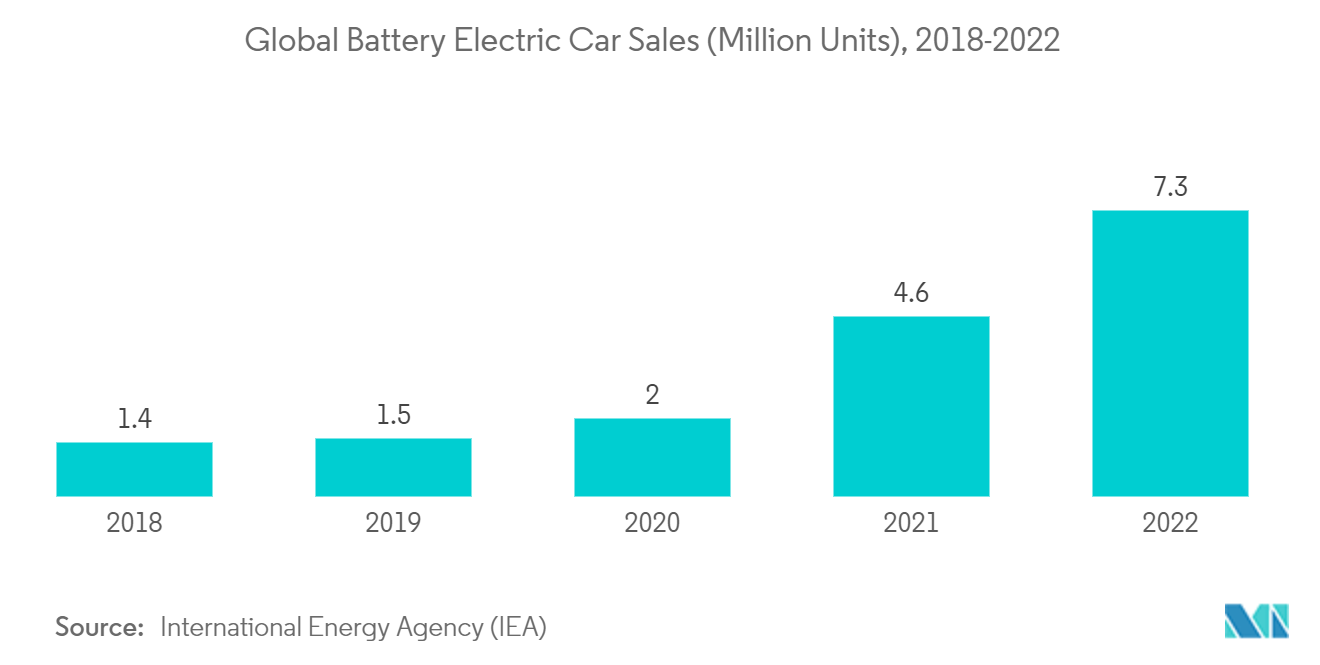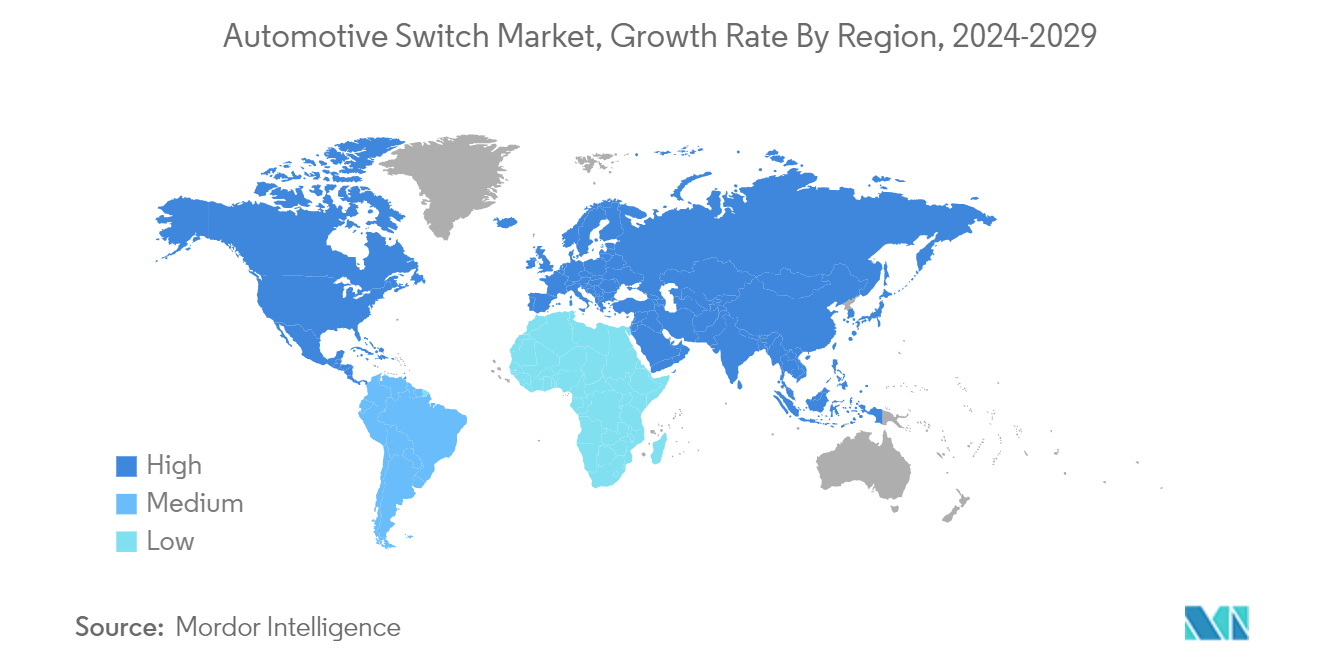Market Trends of Automotive Switch Industry
Electronic System Switches Witnessing Major Growth
The automotive industry is undergoing a significant shift from hardware-defined to software-defined vehicles, leading to an increase in the average software and electronics content per vehicle. This shift is driven by government regulations and consumer demand for greater automatic control of systems, resulting in the widespread use of electronics in vehicles.
A surge in automotive production and sales following the pandemic and supply chain disruptions, along with chip shortages, is expected to create a positive outlook for the market during the forecast period.
There is a growing trend toward making cars more intelligent by allowing them to communicate with other vehicles and infrastructure through electronic systems, ensuring convenience for consumers, which may result in a rapid increase in the demand for electronic systems in new cars.
The demand for automotive electronics has increased due to technology availability in mid-range and entry-level cars and consumer purchase of technology-based aftermarket products.
The electrification of drivetrains, particularly in fully electric vehicles, offers high energy efficiency and zero tailpipe emissions. As a result, the emergence of a wide range of microcontrollers, power semiconductors, switches, and sensors for the pure electric vehicle market is expected to fuel the expansion of the automotive switch market.

Asia-Pacific Holds the Major Market Share
Asia-Pacific leads the automotive switch market, followed by Europe and North America. China dominates the Asia-Pacific automotive switch market. The country is a significant vehicle market in the region. It also dominates the Asia-Pacific automotive industry due to increased vehicle electrification and a rise in advanced technology for safety, such as ESC and advanced driver assistance systems (ADAS).
Rising demand for passenger cars across the country will likely increase the demand for switches in the coming years. The country has introduced safety regulations to run a new car assessment program (C-NCAP) with standards that will match Europe's standards. There have been significant legal and social changes in China since the implementation of these regulations.
The growing trend of vehicle electrification is a significant factor driving the automotive switch market. As a result, automotive manufacturers are increasingly collaborating with electrical component manufacturers to suit the needs of their consumers. Lower system prices have also aided in the rapid adoption of advanced features and semiconductor products in China, which will positively impact the target market's growth.
The usage of electronics in vehicles has increased due to government involvement and consumers' demand for greater automatic control of systems. Electronics provide new opportunities to improve energy efficiency and reduce emissions, as several functions can be consolidated into fewer and smaller electronic control superunits, reducing weight. The high penetration rate of automobile electronics across all vehicle classes is influenced by three major aspects: productivity, quality, and innovation.
Several automakers in China are making changes to match the 2030 carbon peaking aim. By 2024, Dongfeng intends to electrify 100% of its new passenger car models. According to the company, from April 2022 onwards, BYD will only produce BEVs and PHEVs.
With such development across the region, the demand for automotive switches is likely to grow in the coming years.

